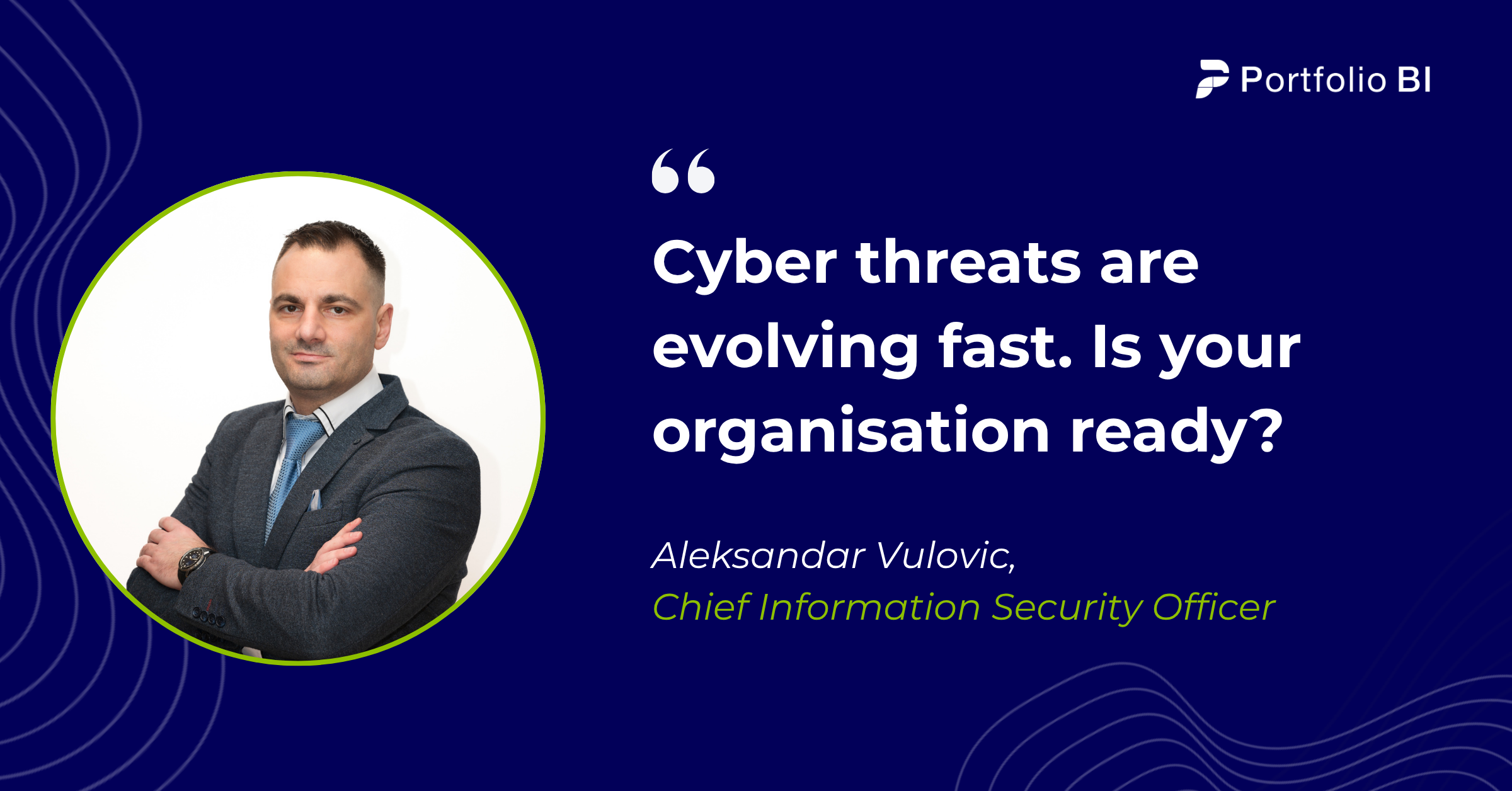In 2025, our increasingly digital world means cyber threats are evolving faster than ever. With artificial intelligence driving more advanced scams and social engineering techniques, individuals and organisations must remain hyper-aware of the cybersecurity threats and risks that can target both systems and people.
At Portfolio BI, we believe that awareness is the first line of defence. Below, we outline the most pressing cybersecurity threats to watch this year – alongside actionable tips to help you and your teams stay secure.
Phishing and quishing: The classics with a modern twist
Phishing remains one of the most prevalent cyber threats – and it’s evolving. In addition to traditional email scams, attackers are now deploying quishing techniques, using malicious QR codes to lure victims into unsafe websites or data theft traps.
What it is: Deceptive emails or QR codes that trick users into revealing sensitive information or installing malware.
The risk: Credential theft, data breaches, and unauthorised access to corporate systems.
What to watch: Suspicious sender addresses, urgent language, shortened or unrecognisable links, and QR codes from unknown sources.
Take action: Hover over links before clicking, verify the sender’s details, and avoid scanning QR codes unless you trust the source.
.
Smishing and vishing: Mobile devices under siege
Cybercriminals are shifting their focus to mobile, where people are often more reactive. Smishing (SMS phishing) and vishing (voice phishing) impersonate trusted sources to bypass security controls.
What it is: Fraudulent text messages or voice calls designed to extract login credentials, payment information, or other sensitive data.
The risk: Bypassing of multi-factor authentication (MFA), financial scams, and unauthorised system access.
What to watch: Unexpected requests for urgent payments or login details via SMS or phone.
Take action: Never share credentials by phone or SMS. Always verify unexpected requests through a known, separate communication channel.
.
Business email compromise (BEC): Trust exploited from within
BEC attacks manipulate trust by mimicking executives, colleagues, or external partners – often leading to unauthorised payments or data loss.
What it is: A targeted scam where attackers spoof or take over business email accounts to deceive employees.
The risk: Significant financial loss, reputational damage, and exposure of confidential information.
What to watch: Odd phrasing, urgent transfer requests, changes in payment instructions, or unfamiliar email addresses.
Take action: Confirm all requests for sensitive information or payments via a separate communication channel.
.
AI-powered scams: A new era of deception
Artificial intelligence (AI) is enabling a new wave of sophisticated cyber attacks. From deepfake videos to perfectly worded emails, these scams are harder to detect than ever.
What it is: Use of AI to create realistic but fraudulent communications or identities, including voice cloning and synthetic media.
The risk: Identity theft, manipulation of internal decision-making, and the spread of disinformation.
What to watch: Uncharacteristic speech, visual inconsistencies in video, or overly generic language that lacks specifics.
Take action: Verify identities through a second method (such as a known video call or internal chat), especially when handling sensitive requests.
.
Malware, ransomware and SEO poisoning: The hidden dangers online
Malicious software is still a major cyber threat, but the way users encounter it is evolving. SEO poisoning, for example, manipulates search results to trick users into clicking dangerous links.
What it is: Malware is delivered through fake ads, websites, or downloads – sometimes disguised as helpful content in search results.
The risk: Locked systems, stolen data, and costly ransom demands.
What to watch: Attachments from unknown sources, unexpected downloads, or search results that look slightly “off”.
Take action: Use up-to-date antivirus software, avoid downloading from unverified links, and access trusted sources directly.
.
Credential stuffing and password spraying: Weak logins exploited
Attackers are increasingly using automated tools to exploit reused or weak passwords at scale – especially in environments lacking strong authentication protocols.
What it is: Using stolen or common passwords to gain access to multiple accounts through repeated login attempts.
The risk: System breaches, identity theft, and widespread access to corporate networks.
What to watch: Multiple failed login attempts, access from unfamiliar locations or times, and alerts from security systems.
Take action: Use long, complex passphrases, enable MFA wherever possible, and use password managers to avoid reuse.
.
Insider and physical threats: The dangers inside the perimeter
Not all threats are digital. Malicious insiders and physical tactics – such as baited USB drives or fake recruitment schemes – can be equally destructive.
What it is: Cybersecurity threats threats originating from inside an organisation, fake job offers or social engineering tactics targeting physical systems and employee trust.
The risk: Infiltration, compromised devices, data theft, or systems sabotage.
What to watch: Unusual staff behaviour, unauthorised access attempts, and suspicious recruitment messages via platforms like LinkedIn.
Take action: Follow least privilege access policies, vet all recruitment contacts, educate staff on recognising social engineering tactics, and report anything suspicious.
.
Staying vigilant in 2025
Cybersecurity threats in 2025 are more nuanced, sophisticated, and difficult to detect than ever before. As threats evolve, so must our defences. Whether through AI-driven scams or human-targeted deception, attackers are exploiting both technology and psychology.
Staying safe requires a combination of awareness, technology, and policy. Cybersecurity isn’t just an IT concern – it’s a shared responsibility across any organisation.
.
Portfolio BI’s cybersecurity checklist:
- Stop. Think. Verify. before clicking, scanning or sharing.
- Use strong, unique passwords and enable MFA.
- Be cautious of links, attachments, and unknown contacts.
- Complete regular security awareness training.
- Report anything suspicious – no concern is too small.
.
Need help reviewing your cybersecurity posture?
Contact us today to speak with our cybersecurity and compliance experts.



